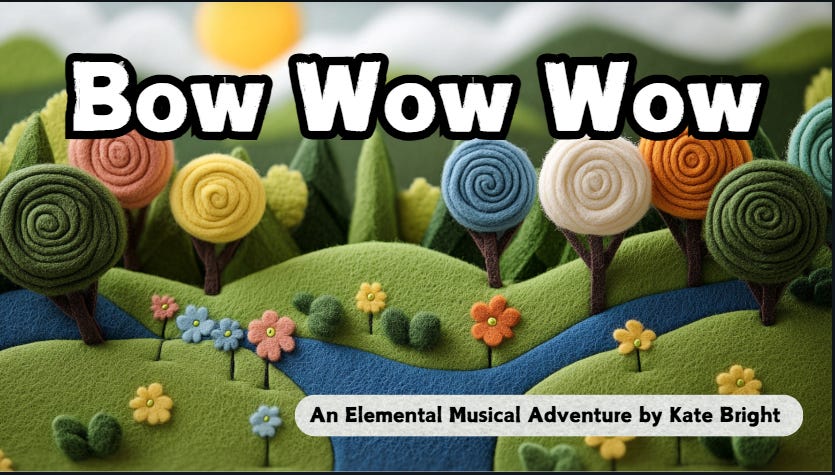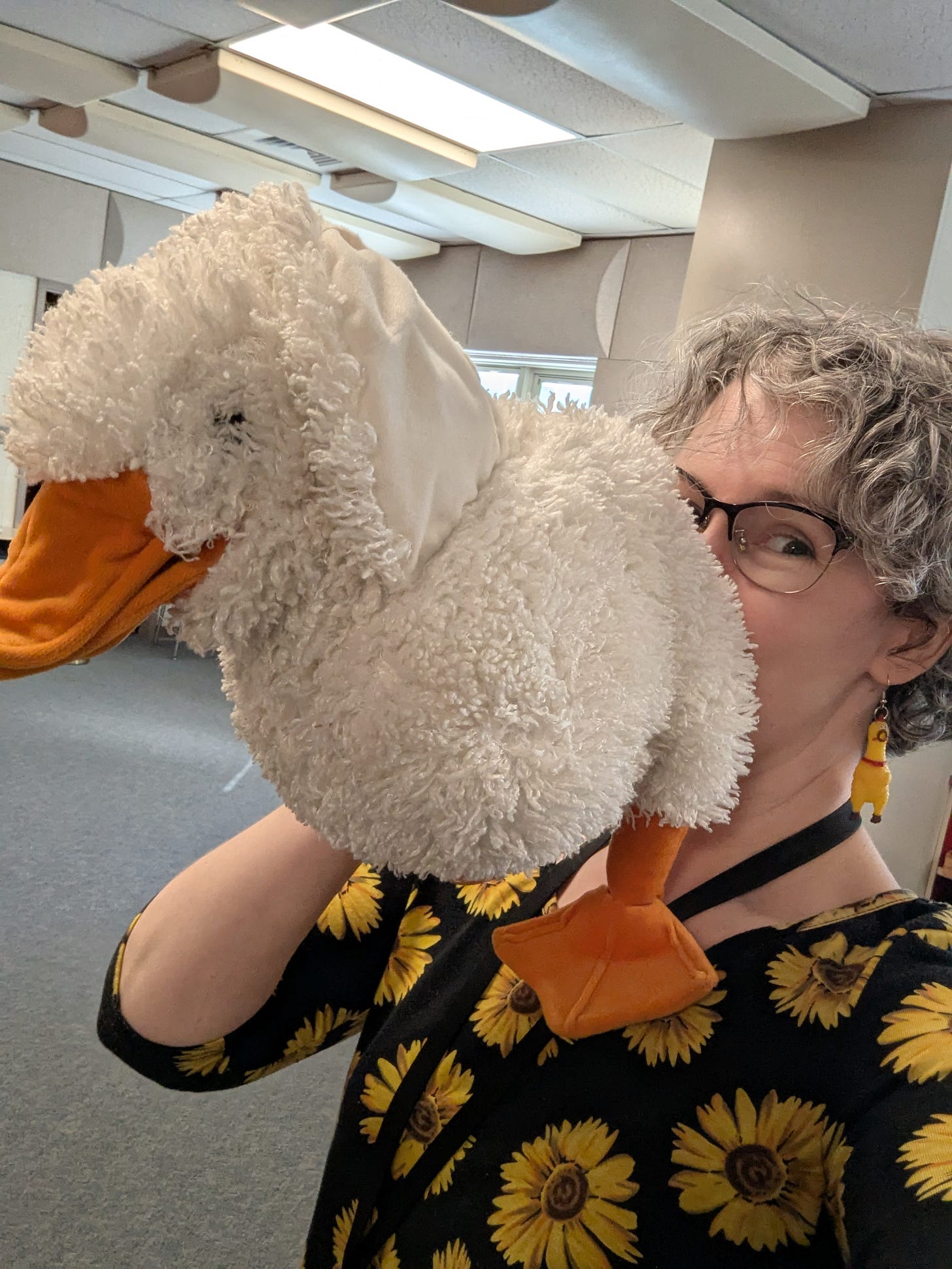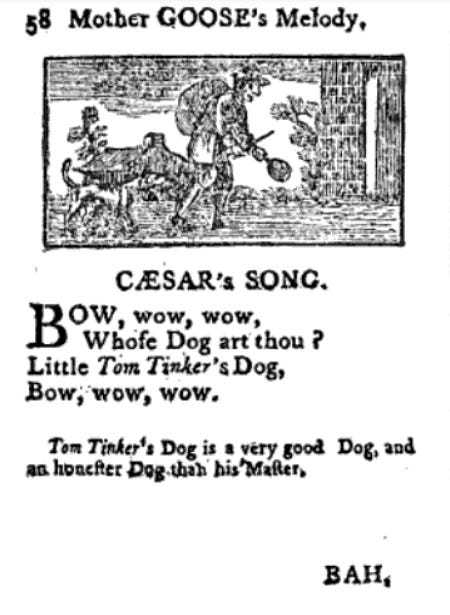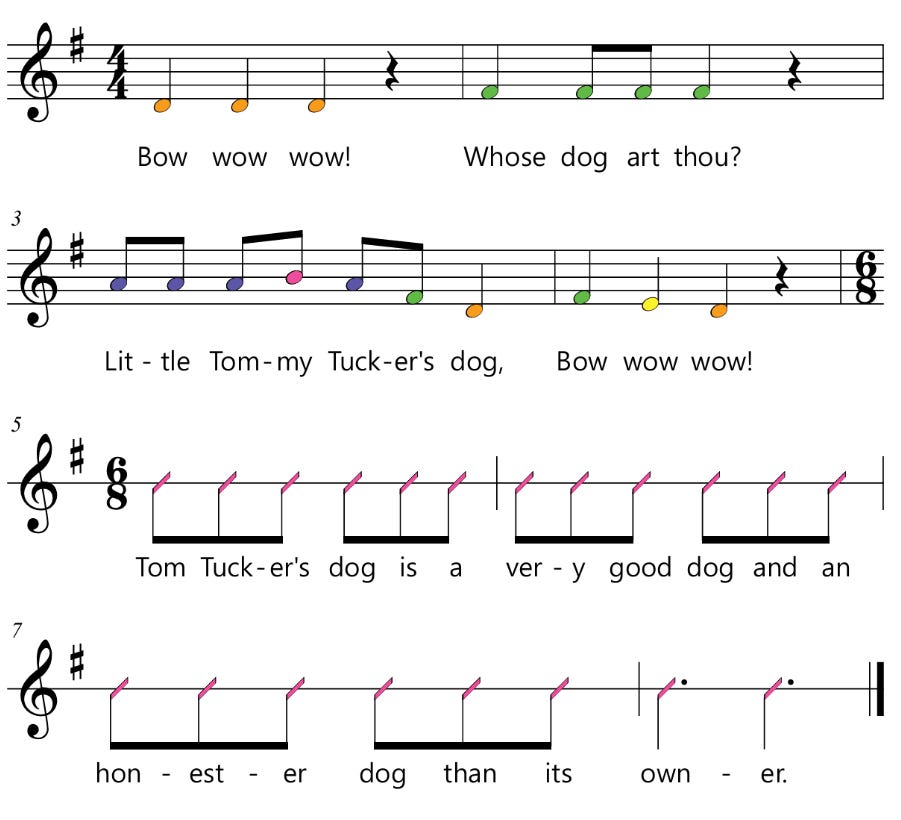Does your school do “Underground” spirit days? These are spirit days where the teachers all do something (like dress in black or dress like students) and the students are not told what’s going on - although they usually figure out something is up pretty quickly.
Friday was “drink from anything that is not a water bottle” day at my school. I forgot, so I shoved my water bottle into a duck puppet. I told my kids I was trying out a new “Stanley Stuffie” water bottle, but…well, it was the “butt" of a lot of jokes, to say the least.
Anyway, for today’s adventure, we’re going to look at “Bow Wow Wow” and how I researched it.
The History of a Favorite
In July 2019, I was sitting at the American Kodály Institute’s opening day when professor and course director Lauren McDougle discussed researching song histories. This happened right when the elementary music world was shaken by the realization that a LOT of elementary-aged students were taught songs with horrifically racist pasts. She shared with us this document, which was later leaked in a Facebook group by a classmate and then spread like wildfire throughout the elementary music Facebook pages.
I felt horrible after I found out how many of my childhood favorites were originally used to mock and degrade others. I vowed that I would do my best to research a song’s origin before using it with my classes.
I have three places where I look: Google Books, Archive.org, and Project Gutenberg. Some songs, like “Rocky Mountain,” I have a really difficult time finding any information about outside of published song collections (which rarely have descriptions of where a song came from).
Luckily, “Bow Wow Wow” is an English-language nursery rhyme that was in one of the first collections from 1760: Mother Goose’s Melody. It was originally titled “Caesar’s Song” and has a little coda that is not commonly found in modern materials: “Tom Tinker’s dog is a very good dog and an honester dog than his master.”
I took that little addition and have added it, using a triple feel, to the original “Bow Wow Wow” folk dance - I did keep the “Tommy Tucker” version I learned rather than the original “Tom Tinker,” as this old dog can only learn so many new tricks.
Then I made it decodable rhythmically and melodically, and thus we have the following Canva:

Bow Wow Wow with Kids
I am using “Bow Wow Wow” with second grade - we’re using it to learn a quarter rest, and to meet “re,” the sneaky little fellow in-between “do” and “mi.”
The first lesson, though, is just to make the kids love it. I teach them the song and dance moves seated in their spots.
Seated version:
“Bow Wow Wow!” - hit the floor
“Whose dog art thou?” - shake your finger
“Little Tommy Tucker’s Dog” - Rotate your hands so they switch places.
“Bow Wow Wow” - wave goodbye for three beats. (Do nothing on the rest!)
“Tom Tucker’s dog is a very good dog and an honester dog than its owner.” - Pat your lap, clap your hands, mime clapping a partner’s hands, clap your hands - do this pattern twice on the macrobeats of the 6/8 section.
Once students can follow this pattern, have them stand in a single circle, facing their partners. For the tutorial, do this step-by-step - the partner change is their favorite, but can also easily fail!
Standing Partner-Changing Version
“Bow Wow Wow!” - stamp the floor
“Whose dog art thou?” - shake your finger
“Little Tommy Tucker’s Dog” - High ten your partner, and switch to their spot.
When I’m teaching this section, I often have them look their partner in the eye and say “I’m taking your spot! NO - I’m taking YOUR spot.” Then we rotate around with partners keeping eye contact, until they have changed places. Students will rotate 360 degrees, turn away from each other, wander off from the circle - there are 1,000,000 mistakes to be made here and every year 90% will get it right and there will be one new variation I’ve never seen before.
“Bow Wow Wow” - wave goodbye three times, and then jump 180 degrees. Ta-da! You have a new partner!
“Tom Tucker’s dog is a very good dog and an honester dog than its owner.” - Same as seated version, except students have a partner: Pat your lap, clap your hands, clap your partner’s hands, clap your hands, and then repeat.
Once students get the hang of it, I repeat the song until students are back with their original partners. By the end, students are singing and chanting along and are giggling every time they jump to get a new partner.
The addition of the triple section is important to get students used to hearing triple as well as offering a little buffer section in the dance if someone did get confused.
“Bow Wow Wow” is so popular in music education land because it can be used for so many curricular goals - quarter rest, learning “re,” a song with a full pentatonic scale, you can add ostinati - whatever you need, “Bow Wow Wow” can help you learn. It’s also a great tie-in to reading. There’s alliteration with the name, onomatopoeia with the animal sounds, and my students and I had a great discussion about why no one ever updated the “whose dog art thou” to “whose dog are you?” (In the slides, I added a page in the “Teacher’s only” section where kids can see the original 1760 imprint. It generated great questions!)
Newsletter Note
Sorry for not having any brand-new content for you this week - I’m writing this from a hospital room as I watch my Dad sleep as he recovers (and he is recovering!) from an infection.
In other words, if you have someone who could benefit from this, feel free to share. If your friend sent it your way, you can subscribe (for FREE) below.





